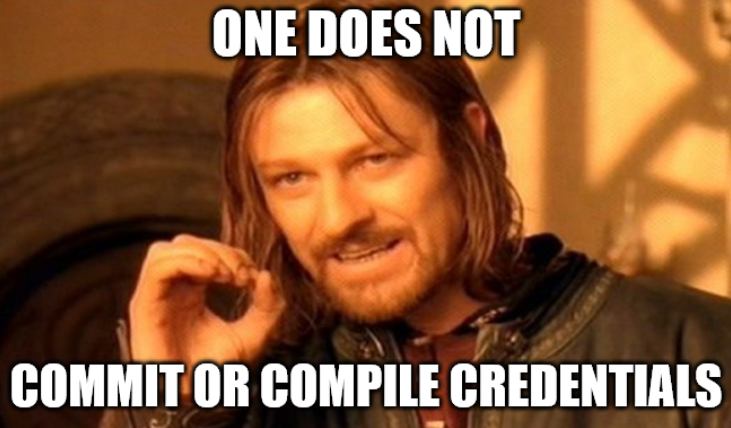this post was submitted on 12 Jul 2024
366 points (97.4% liked)
Programmer Humor
20039 readers
1358 users here now
Welcome to Programmer Humor!
This is a place where you can post jokes, memes, humor, etc. related to programming!
For sharing awful code theres also Programming Horror.
Rules
- Keep content in english
- No advertisements
- Posts must be related to programming or programmer topics
founded 2 years ago
MODERATORS
you are viewing a single comment's thread
view the rest of the comments
view the rest of the comments

At my workplace, we use the string
@nocommitto designate code that shouldn't be checked in. Usually in a comment:but it can be anywhere in the file.
There's a lint rule that looks for
@nocommitin all modified files. It shows a lint error in dev and in our code review / build system, and commits that contain@nocommitanywhere are completely blocked from being merged.(the code in the lint rule does something like
"@no"+"commit"to avoid triggering itself)That approach seems useful but it wouldn't have prevented the PyPI incident OP links to: the access token was temporarily entered in a
.pypython source file, but it was not committed to git. The leak was via.pyccompiled python files which made it into a published docker build.Yeah, but a combination of this approach, and adding all compiled file types including .pyc to .gitignore would fix it.
But in this case they didn't accidentally put the token in git; the place where they forgot to put
*.pycwas.dockerignore.This sounds like a really useful solution, how do you implement something like this? Especially with linter integration
I'm not sure, sorry. The source control team at work set it up a long time ago. I don't know how it works - I'm just a user of it.
The linter probably just runs
git diff | grep @nocommitor similar.Depending on which stack you’re using, you could use https://danger.systems to automatically fail PRs.
PRs? Isn't the point of
@nocommitthat something does not get committed, and therefore no credentials are stored in the git repository? Even if the PR does not get merged, the file is still stored as a hit object and can be restored.I read the lint part and my brain forgot about everything else. You could stick the danger call in a pre commit hook though.
This is a huge idea. I'm stealing it.
Not just for credentials, there are many times where I change a setting or whatever and just put "//TODO: remember to set it back to '...' before commiting". I forget to change it back 99% of the time.
Neat idea. This could be refined by adding a git hook that runs (rip)grep on the entire codebase and fails if anything is found upon commit may accomplish a similar result and stop the code from being committed entirely. Requires a bit more setup work on de developers end, though.
Would a git hook block you from committing it locally, or would it just run on the server side?
I'm not sure how our one at work is implemented, but we can actually commit
@nocommitfiles in our local repo, and push them into the code review system. We just can't merge any changes that contain it.It's used for common workflows like creating new database entities. During development, the ORM system creates a dev database on a test DB cluster and automatically points the code for the new table to it, with a
@nocommitcomment above it. When the code is approved, the new schema is pushed to prod and the code is updated to point to the real DB.Also, the codebase is way too large for something like ripgrep to search the whole codebase in a reasonable time, which is why it only searches the commit diffs themselves.
There are many git hooks. One of them checks each commit, but there's another that triggers on merges.